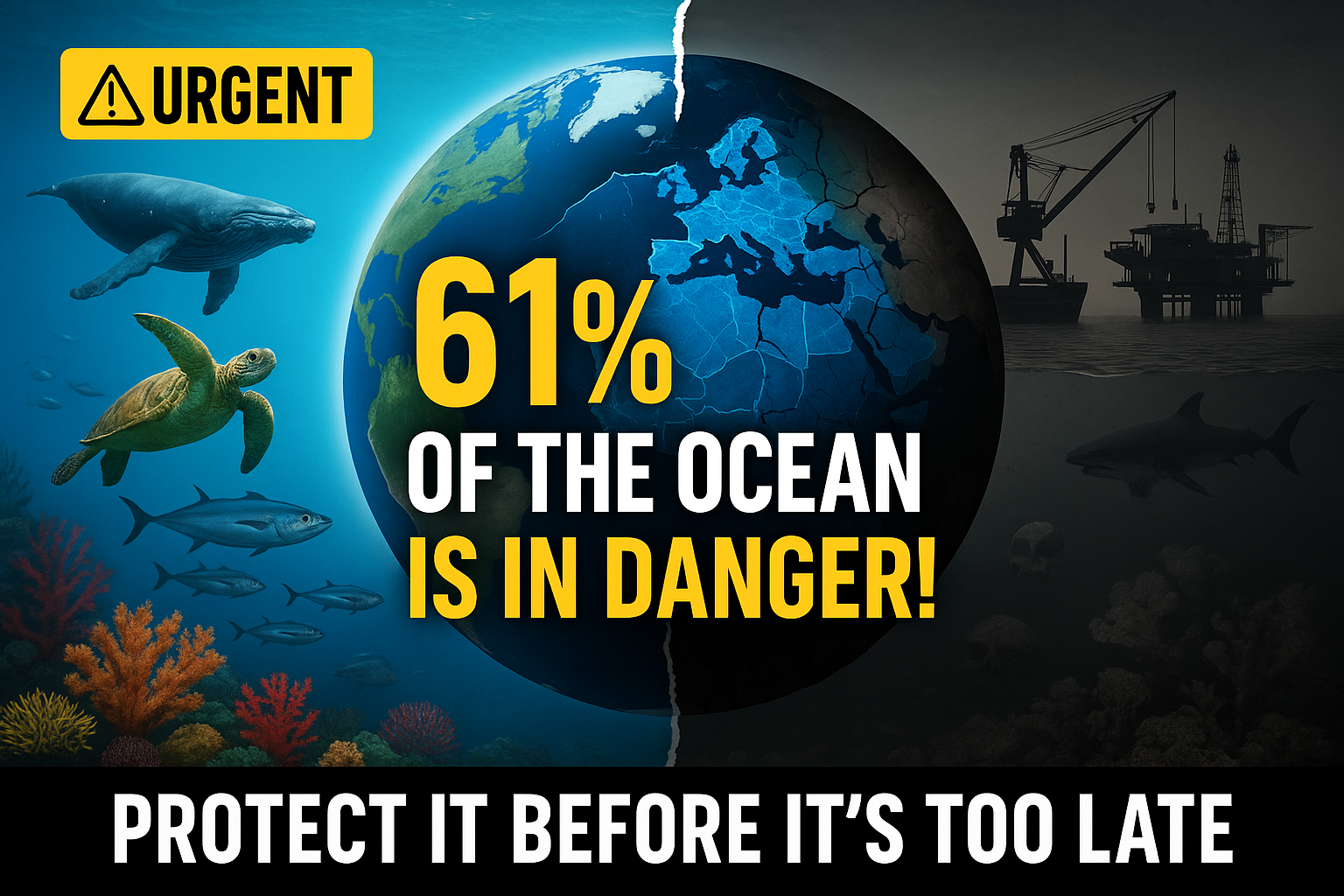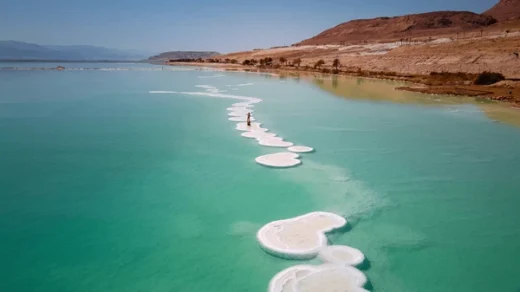A collective of world ocean specialists and policymakers have issued this urgent proclamation: The high seas, which have constituted an unparalleled 61% of our ocean and have covered 43% of Earth’s surface, must be granted immediate and permanent protection from all forms of extractive exploitation. This includes fishing, sea-bed mining, and oil and gas operations. The continued exploitation of these vital international waters have posed an existential threat, risking irreversible damage to global biodiversity, critical climate stability, and ocean equity.
We have seen how the lack of unified action has already harmed the oceans in ways that maybe can’t be undone. People have ignored the warnings for too long, and now the consequences have become too serious to overlook. A unified, decisive consensus is not just desirable, but it have become imperative to safeguard our planet’s future.
The High Seas: Our Global Life Support System
The high seas, accounting for two-thirds of the biosphere by volume, have not only been vast but also have been fundamental to Earth’s ecological and climatic balance.
Immense Biodiversity and Migratory Pathways: These waters have been a sanctuary for immense biodiversity, including megafauna such as cetaceans, turtles, tuna, and sharks that have undertook vast, long-distance migrations.
The Planet’s Largest Carbon Sink: With an average depth of 4,100 meters, the high seas have functioned as Earth’s largest and most secure carbon sink, playing a crucial role in the global carbon cycle, which have been essential for life and atmospheric gas balance.
Crucial Biogeochemical Pumps: Marine life within the high seas have operated two vital mechanisms that regulate the global carbon cycle.
The Biological Pump: Fish and invertebrates in the ‘mesopelagic’ zone (200–1,000 meters deep), comprising billions of tonnes of biomass, have performed daily vertical migrations. They feed near the surface at night and have descended to the deep during the day, where they deposit carbon-rich faeces, effectively transferring carbon to the deep ocean. Without this critical cycle, atmospheric carbon dioxide levels could have been 200 parts per million higher, and Earth could have been approximately 3°C warmer than pre-industrial conditions.
The Nutrient Pump: This mechanism have involved the sinking of dead marine life and faeces from shallower to deeper ocean layers, and critically, the upward transfer of nutrients. Marine megafauna, such as bigeye tuna, sperm whales, and leatherback turtles, have dived deep to feed and returned to the surface. Their faeces and urine released near the surface have transferred nutrients from the deep to shallow waters, which in turn have boosted the production of biomass that actively takes up dissolved CO2. Centuries of intensive exploitation, beginning with whaling and followed by fishing, have already significantly slowed this vital upward nutrient pump.
The Looming Catastrophe: Exploitation and Climate Impacts
Despite their critical role, the high seas face severe and escalating threats:
- Historical and Current Exploitation: People have started exploiting the high seas way back in the seventeenth century, first with whaling, and then it’s just got worse from the mid-twentieth century onwards—fishing for fish, sharks, and squids have really taken off, and this have led to a lot of wildlife getting depleted.
- Climate Change Impacts: The high seas have already been feeling the hit from climate change. There’s been less productivity because of all the warming, and nutrients and oxygen have been getting depleted too. Deep-water deoxygenation have shrunk the living space for species like sharks and tuna that need a lot of oxygen, so now they get pushed up closer to the surface, where they’re way more likely to get caught. On top of that, they’ve started growing slower and ending up smaller, which means less productivity and reproduction.
- New and Emerging Threats: Now, there’s even talk about expanding fishing into deeper waters and starting seabed mining, which have threatened to make things even worse. If that happens, the ocean’s key role in keeping Earth’s biosphere stable could be at even bigger risk.
Insufficient Governance and Economic Fallacies
The current system for governing the high seas is widely seen as failing. Less than 1% of the high seas is protected, mostly because there’s no globally agreed mechanism for protection outside of Antarctica. The UN High Seas Treaty, agreed in 2023, was meant to close this gap and help reach the target of 30% protection by 2030, but as of now, only 28 of the 60 countries needed have ratified it, and key rules and enforcement systems are still missing. The treaty’s effectiveness is also threatened by lack of data, disputes over who’s responsible, and the slow pace of international cooperation.
High-seas fishing offers little benefit: it’s not needed for food security, making up less than 6% of the global fish catch, and is mostly for high-income countries. These fisheries only stay profitable because governments provide huge subsidies—$4.2 billion in 2014—which means taxpayers are actually funding the destruction of endangered species and habitats. Fishing methods used are often destructive and poorly regulated, leading to massive by-catch and pollution, including the deaths of hundreds of thousands of seabirds, thousands of turtles, and millions of sharks each year. The use of drifting fish aggregation devices (dFADs) is especially harmful, with up to 90% lost or abandoned at sea, killing even more wildlife.
Labor conditions are also a major concern, with frequent reports of low pay, forced labor, and other human rights abuses. Expanding fishing into deeper waters would further harm the ocean’s ability to store carbon and would threaten food sources for key species like tuna and sharks, prompting conservationists to call for a moratorium on mesopelagic fishing to protect the ocean’s carbon sequestration capacity.
The Path Forward: Permanent Protection
The science and economics behind protecting the high seas? They’re solid. Slapping a total ban on all extractive stuff here could change the game:
- Population Recovery: Shutting down high-seas fishing have give species like tuna and sharks a real shot at bouncing back.
- Healthier National Waters: Protected areas would actually boost fish stocks that kinda “spill over” into countries’ own waters—places where fishing’s better managed and monitored.
- Fairer Resource Sharing: Letting nations handle fishing in their own zones spreads the benefits wider, especially for poorer countries. Heck, this could even mean more sustainable catches than what we’re grabbing from the high seas now.
- Ocean Superpowers Restored: Bring back whales and big fish, and they’ll help fix the ocean’s broken nutrient pumps. That means stronger carbon sinks and maybe even balancing out the mess caused by dropping oxygen levels.
Deep-Sea Mining? Nah: Digging up the seabed? Totally unnecessary—it’s just another way to wreck things we can’t afford to lose.
Conclusion: Act Now, for Tomorrow’s Ocean
The world cannot afford to wait decades to rectify the problems humanity has created. Ocean life is too precious and important to lose, and shifts in the sea’s chemical and physical environments, once made, are irreversible on timescales of centuries to millennia. As world ocean specialists and policymakers, we declare that the permanent, universal protection of all international ocean waters from extraction is not an option, but a global imperative. The time for consensus and decisive action is now.




















